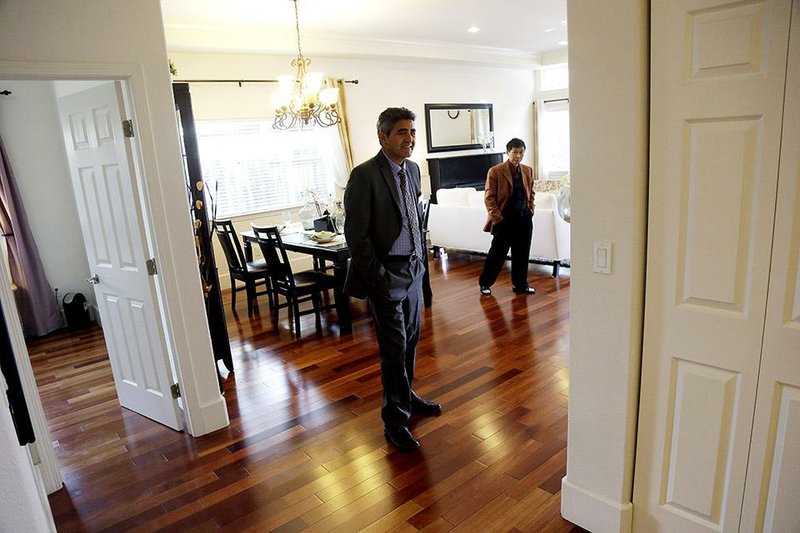WASHINGTON -- More Americans purchased homes in December, yet total sales slipped in 2014 as first-time buyers struggled to find houses.
The National Association of Realtors said Friday that sales of previously owned homes rose 2.4 percent last month to a seasonally adjusted annual rate of 5.04 million. But over the course of the entire year, sales fell 3.1 percent to 4.93 million.
"Demand has been pretty sideways," said Jay Feldman, an economist at Credit Suisse in New York. "As the job market improves, first-time buyers will perhaps be less of a headwind. Low mortgage rates will provide support."
Only 29 percent of sales went to first-time buyers last month, compared with a historic average of 40 percent. Rising home values and relatively stagnant incomes priced prospective buyers out of the market. Affordability has improved in recent months as mortgage rates have plunged, leading to the possibility of stronger sales in 2015.
"Sales will increase throughout 2015 as potential buyers feel more comfortable about the economic outlook and lenders are willing to make loans," said Stuart Hoffman, chief economist at PNC Financial Services.
Median home prices increased 6 percent over the past 12 months to $209,500.
There were relatively few listings in December, as the supply of homes on the market dropped to 4.4 months from 5.1 months in November, the Realtors association said. The supply was the lowest in two years.
Much of the gains in sales came from the West, with additional growth in the South. Sales slumped in the Northeast and Midwest.
But some say home-buying is poised to improve.
"There are good supporting factors behind the housing market," said Jennifer Lee, a senior economist at BMO Capital Markets.
Strong job growth over the previous year has added nearly 3 million new paychecks to the economy. Mortgage rates have fallen sharply, and home values are rising at a slower clip, giving prospective buyers some financial leeway.
The Realtors expect sales will rise 8 percent this year to 5.3 million homes. Much of that growth will hinge on first-time buyers getting out of the rental market.
Jed Kolko, chief economist at Trulia, predicts that much of the growth will occur in the suburbs.
For starters, the suburbs are more affordable, with prices rising 5.7 percent per square foot last year, compared with an 8.1 percent surge in urban neighborhoods. Secondly, urban populations have risen in recent years because of what Kolko calls a "demographic jolt" from twenty-somethings renting close to downtown, a pattern that soon will reverse itself.
"As millennials get older, many will follow a familiar path: They'll partner up, have kids and move to the suburbs," Kolko said in a report released this week.
Analysts expect the resilient U.S. economy to provide a tail wind this year, too. Employers added an average of 246,000 jobs a month last year as the unemployment rate dropped from 6.7 percent to 5.6 percent. While average hourly wages grew only slightly faster than inflation, the additional number of paychecks coupled by younger workers who are starting to move up the career ladder should put more first-time buyers in a better position.
Borrowing costs also have plummeted. With growing signs of a weakened global economy, investors have sought to shelter their money in U.S. Treasurys. That has pushed down bond yields and mortgage rates. The average 30-year mortgage rate has fallen to 3.63 percent from 4.39 percent a year ago, the mortgage company Freddie Mac, the Federal Home Loan Mortgage Corp., said Thursday.
That decline translates into savings of about $880 a year in mortgage payments for a $210,000 house. Rates have remained low even though the Federal Reserve in October ended its monthly bond purchases, which were meant to hold down long-term rates.
A slowing rate in the growth of housing values likely will help sales. Home values surged at a double-digit pace nationwide in 2013, pricing out many would-be buyers in 2014. Annual price growth has now slowed to 4.5 percent, as measured by the Standard & Poor's/Case-Shiller index, allowing more buyers back into the market.
Information for this article was contributed by Shobhana Chandra of Bloomberg News.
Business on 01/24/2015
